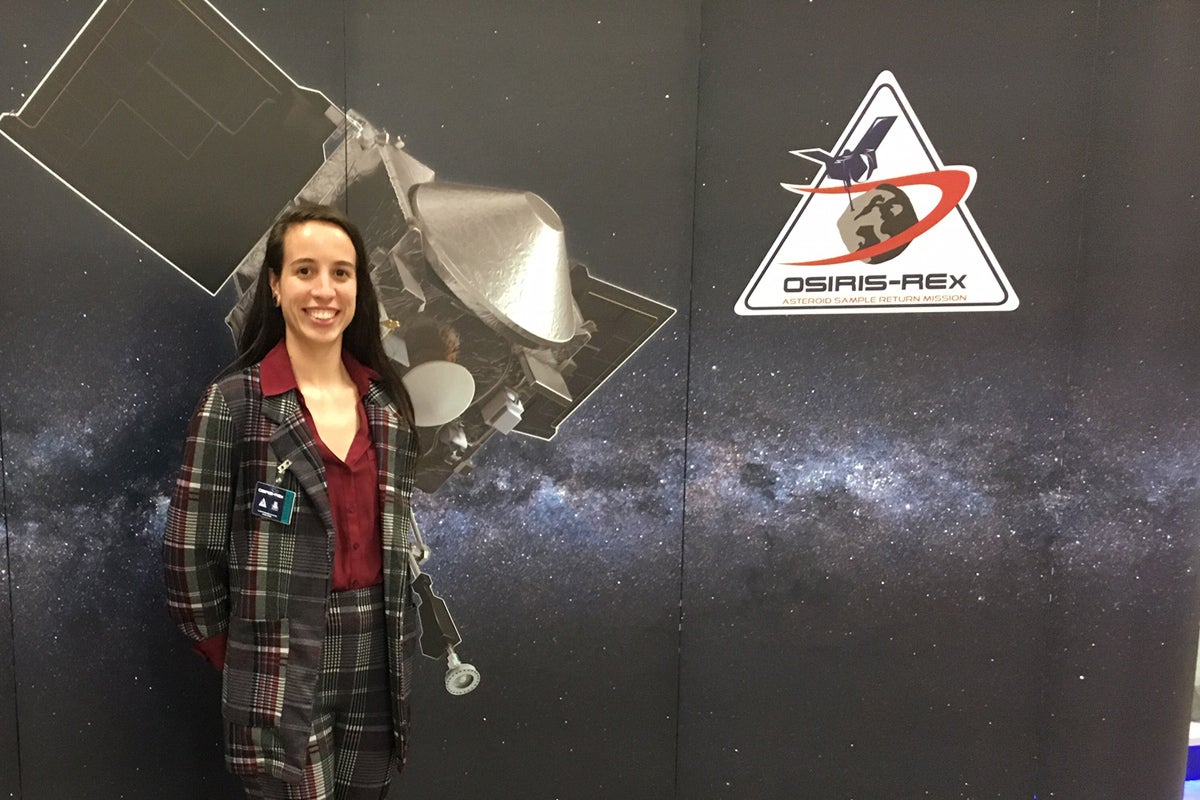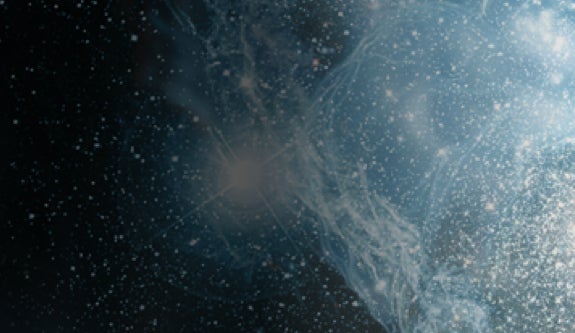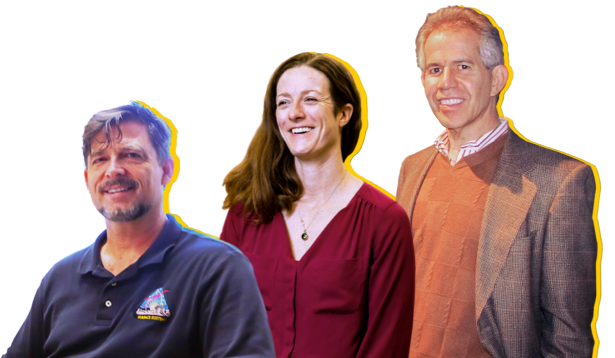While many students spent their summer break at the beach or working to earn tuition money, UCF physics student Jennifer Nolau spent her break analyzing thousands and thousands of digital images beamed to her from an asteroid millions of miles from Earth.
Curled up in her favorite pajamas with her laptop in her off-campus apartment, the 25-year-old from South Florida, spent about 10 hours a week analyzing boulder and rock images from asteroid Bennu, the site of NASA’s OSIRIS-REx (Origins, Spectral Interpretation, Resource Identification, Security-Regolith Explorer) mission. The first American mission of its kind has sent a spacecraft to the asteroid and is currently analyzing where to best grab a sample of its surface to bring back to Earth.
The mission is important because the sample may provide information for the understanding of the origins of the solar system. What scientists learn may also help devise a way to deflect dangerous near-Earth asteroids.
“I still can’t believe it,” Nolau says. “This is just so mind-blowing. I mean I’m an undergrad and here I am part of this NASA mission. I’m making connections here that will help me establish my career when I graduate. The people I’m working with are amazing. I’m still pinching myself.”
“This is just so mind-blowing. I mean I’m an undergrad and here I am part of this NASA mission. I’m making connections here that will help me establish my career when I graduate.” — Jennifer Nolau, UCF student
The Road Almost Missed
Nolau originally was on track to become a nurse or doctor.
“I was a biomed major, but then I took organic chemistry and was like, no way, this is not for me,” she says with a laugh. “But I always liked physics and I love Star Wars. Yeah, geeky I know. I took [physics] Professor [Humberto] Campins’ class last year and I knew I had found my place. I switched majors and here I am.”
Nolau is pursuing a bachelor’s degree in physics with a planetary sciences emphasis and a minor in mathematics. That’s one of the reasons she is right for the image-analysis job.
She spends hours looking at images to determine the size and location of each of the rocks and boulders within the pixel set she examines. It involves a lot of math and precision. The images are pulled down from the spacecraft and then sent to her computer. When she’s done with her work, she sends her data back to the mission’s science team at the University of Arizona.
“She’s smart and detail-oriented,” says Campins, a co-investigator on the NASA mission, working on the imaging team. In addition to working on OSIRIS-REx, Campins is an internationally recognized expert on asteroids. “Jennifer’s work has been exceptional. It made such an impression that the entire imaging team wanted to meet her.”
A Trip of a Lifetime: Meeting the OSIRIS-REx Team
Nolau spent the week before classes at the hub of the OSIRIS-REx project, the University of Arizona in Tucson. The mission’s leader, Dante Lauretta, is based there and every week the mission team meets to talk about the progress of the mission, which launched in 2016 from the Space Coast. Next year the team is scheduled to maneuver the spacecraft so it can collect the asteroid sample and then begin its long journey home.
The work to select the right sample-collection site began months ago when the team received its first images of the asteroid from the spacecraft. The team of experts thought they knew what they would find. What Campins and the rest of the team found was a surprise. The surface was a lot rockier than expected and portions of the asteroid are sending projectiles into space. The team still hasn’t figured out why. The original plans were modified and more images were requested to select the best collection site, which would pose the least danger to the spacecraft.
Thousands of images have been taken, and Nolau joined the team in time to begin narrowing the field of sample-site candidates from more than 100 in July. Last week the team selected four candidate sites for further study. The final decision – of a primary and back-up site – will be made in December. Even now, the work continues to ensure the navigation team has the most accurate information possible.
“Talk about pressure, right?” Nolau says. “You don’t want your miscalculation to be the reason the mission fails.”
Seems to be a low probability of that. Nolau is a self-starter. While taking Campins’ class and working on her own research, she applied and was accepted into NASA’s Lucy Space Pipeline Accelerator Virtual Academy. It’s a virtual boot camp that prepares participants to properly submit a proposal to NASA for funding.
Campins also introduced her to T.D. Swindle, director of the Lunar and Planetary Laboratory at the University of Arizona. They collaborated on a separate research project, which resulted in Nolau’s first conference presentation. Swindle presented it on her behalf last month at the 82nd annual meeting of the Meteoritical Society in Sapporo, Japan.
Not bad for the daughter of a cargo plane pilot and a dairy farmer from Portugal, she jokes.
“You have to take advantage of every opportunity,” she says. “Professor Campins and UCF have opened the doors for me. I want to do all I can to be ready for my first job, my first grant. I want to make them proud.”







